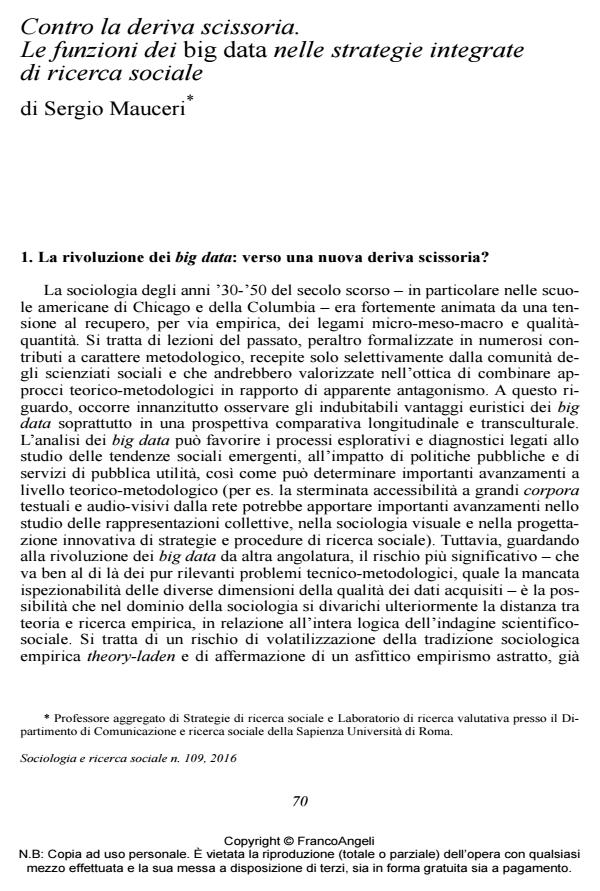Against a Divisive Drift. The Functions of Big Data in the Integrated Strategies of Social Research
Journal title SOCIOLOGIA E RICERCA SOCIALE
Author/s Sergio Mauceri
Publishing Year 2016 Issue 2016/109
Language Italian Pages 13 P. 70-82 File size 85 KB
DOI 10.3280/SR2016-109007
DOI is like a bar code for intellectual property: to have more infomation
click here
Below, you can see the article first page
If you want to buy this article in PDF format, you can do it, following the instructions to buy download credits

FrancoAngeli is member of Publishers International Linking Association, Inc (PILA), a not-for-profit association which run the CrossRef service enabling links to and from online scholarly content.
Despite the undoubted benefits of Big Data, it may also pose the risk of a new divisive drift within social sciences. In the long term, the Big Data revolution could in fact lead to an eclipse of primary data collection procedures, with inevitable damage to the productivity of social research. This paper reconstructs a typology of strategies to integrate Big Data with conventional research pathways, re-evaluating the forgotten lessons of the American Schools of Chicago and Columbia. The typology is constructed by combining two criteria: the function of Big Data and the time order.
- Handbook of Research on Advanced Research Methodologies for a Digital Society Costantino Cipolla, pp.42 (ISBN:9781799884736)
Sergio Mauceri, Contro la deriva scissoria. Le funzioni dei big data nelle strategie integrate di ricerca sociale in "SOCIOLOGIA E RICERCA SOCIALE " 109/2016, pp 70-82, DOI: 10.3280/SR2016-109007